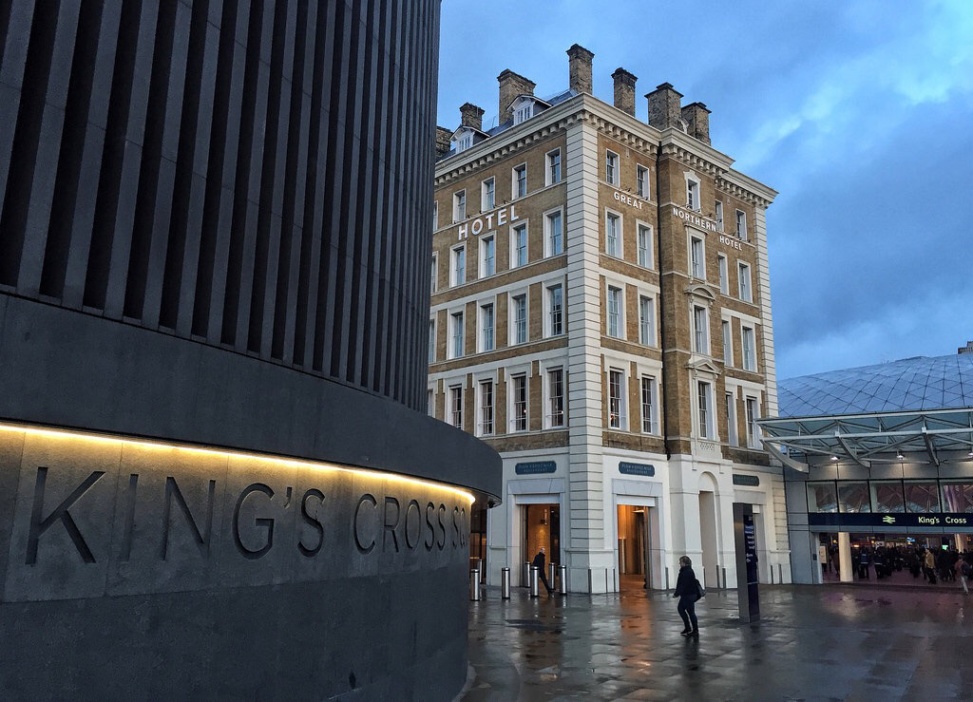Just as the redundant docklands were transformed into a modern financial area – and more – in the 1980’s, so too King’s Cross has been changed almost beyond recognition in recent times. It was one of London’s sleaziest areas. The developers have replaced much of the local “colour” with statement architecture, much of it impressive. King’s Cross and the international rail terminal at St Pancras next door are powerful introductions to the capital city, and indeed the country, for those arriving from overseas. Compared to leaving the Gare du Nord in Paris, arriving in London feels like arriving in the next century. The trade off for all of this strident architecture is the loss of the sharp, seedy backstreets and the feeling of sooty decay that had characterised the area for decades. Not a bad trade perhaps, but of course, once its gone, its never coming back. Yet another piece of old London slipping through the cracks and almost immediately forgotten.
Here, the Great Northern Hotel is squeezed between the beautifully re-imagined Kings Cross railway station and the new circular shop that sits in the middle of Kings Cross Square. It looks hemmed in and under pressure as well it might. During the planning phase for the re-development of the area, the hotel had a red dot on it and was destined for demolition. Unlike much of the area, it had a reprieve. It was built in 1854, three years after the railways had cut their way through the outskirts of London to deliver their northern passengers into the metropolis at the brand new King’s Cross station. Imagine the changes to London that were brought by those tunnels being dug, tracks laid and stations built. The old London of the 1840’s and before would have been knocked down to make way. And the passengers disgorged onto the platforms at King’s Cross, and Waterloo, Euston, Paddington and the rest of London’s ring of major termini, brought their own mammoth changes to the city. The population grew from 1 million to 7 million during the nineteenth century and their need for homes saw London sprawl and swell and absorb the local rural areas. And that’s the irony of London; there’s always an old London being lost and mourned and a new London being born that will one day, too, be lost.
The development of the surrounding King’s Cross area continues apace today. Google have taken a large plot of land and will build a temple to their organisation on it. Its not going to be a modest affair. About the size of the railway stations that will become its neighbours, the new building will almost certainly dominate the area visually. More glass and steel.
Good for the economy, no doubt, and another sign that London continues to prosper but this will be another huge change to the landscape and the old London – my version of old London – will continue to be squeezed out of the picture.
